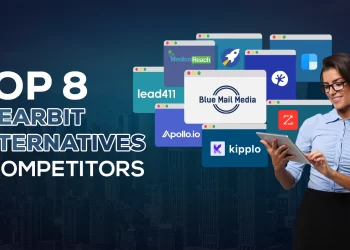Covid-19 pandemic and the restrictions that followed brought several challenges for the marketers. As the world continues to battle the challenges even after one year of the pandemic, marketers have learned to adapt and think more creatively. This article looks at some of the biggest challenges that stand in the way of CMOs as they try to navigate their marketing in 2021.
Cost-cutting
Post-pandemic, marketers have to make the most of what they have. Things have been especially difficult after layoffs and spending freezes in the wake of the pandemic. This means the CMOs have to work smartly to make the most of the available resources.
Overcoming the Content Bottleneck
The pandemic impacted the ROI marketers were getting from the traditional marketing channels. Due to several companies going under lockdown and fewer people going out and interacting, they had to shift their focus to the digital side of marketing. Due to this change, there is a higher demand for digital content; therefore, there is a lot of stress on the marketing teams. Rearrangement of the marketing team is taking up a lot of time, and a lot of content plan has been delayed. CMOs thus have a big task of overcoming the challenge of the content bottleneck.
Shifting Priorities and Strategies
Post-pandemic, brands that were planning to host or attend trade shows, conferences, or other events have had to switch to virtual events quickly. Marketing departments had to increase investments in various other channels, such as – social media, webinars, video, and blog content. Shifting priorities proved to be daunting and even disorienting for some marketers. They had to venture more deeply into areas they’ve rarely dabbled in, like video marketing.
Re-building Customer Relationships
In 2020, CMOs reported major dips in customer acquisition and sales revenues. Many of the businesses reported consumers as being less loyal than before and more price sensitive. It is because of these changes in the market and consumer behavior, the development of trusting relationships with customers became marketers’ top priority. Today, they are faced with the dual task of developing relationships with the customers and revitalizing existing relationships that were interrupted by the pandemic.
Salesforce Management
Equipment manufacturers, pharmaceutical companies, and enterprise service providers often depend on salespersons who directly meet potential buyers for sales purposes. But, due to the temporary work-from-home policies of many large institutional buyers, much of this has been disrupted. Post Covid-19 outbreak, meetings with multiple stakeholders like top management, financial approvers, procurement managers, and end-users have taken a virtual route. While the meetings may have shifted online, this change has affected the efficacies of salespeople who have years of experience selling via offline, personal meetings.
Dealing with Digital Frauds
While the pandemic has shifted ad spends to digital like never before, this widespread adoption of digital has given rise to digital frauds in a big way.
As per a report on Fraud & Risk Management in Digital Payments, in the past few months, since the spread of the pandemic, there has been a significant rise in cybercrimes such as malware campaigns, web-skimming, and phishing scams. Therefore, while digital will still be a bigger pie for marketing spends, ensuring digital safety and avoiding ad frauds will be a big challenge to overcome.
Changing Privacy Regulations
Privacy regulations are evolving, and third-party cookies are being phased out. Therefore, to continue reaching their target audience, CMOs will have to introduce local strategies to understand their customers’ purchase intent. This first-party customer data obtained with permission can then be leveraged to obtain valuable insights into customer actions for personalization, conversion, and loyalty.
Educating Clients who are just Learning about Digital Channels
Many of the customers are just getting into digital. Therefore, a big challenge this year will be educating them. Many marketers have shifted their budget from offline marketing to digital marketing. This new trend means to get the clients’ true buy-in on digital and ensure long-term success; they should be given some sort of digital education.
Market Saturation
Now that more brands have turned towards adopting online business practices, market saturation is one of the biggest challenges in 2021 for CMOs. The key to staying ahead will be to think creatively and keep customers at the heart of all the strategies.
Conclusion
Among the challenges of COVID-19, the definition of customer experience has changed. In today’s world of marketing, digital channels are no longer a choice for marketers. Marketing trends that seemed like they were years away from adoption have gained impetus after the pandemic. CMOs have been forced to shift priorities and improvise to keep up. The best way to adapt to these shifts is to align the customer experience (CX) to this new reality, in which the technology is associated with greater convenience instead of unnecessary requirements and hassles.








